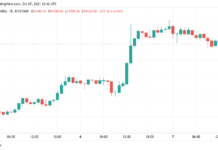Just emerging from a heat wave not seen in a hundred and fifty years and a shortened monsoon period, Japan is experiencing torrential rains. “Be careful of the risk of floods and landslides. Beware of strong gusts of wind, lightning and tornadoes”, warned, Wednesday, July 6, the meteorological agency (JMA). The alert concerns the east and the north of the country. The Tokyo area was expected to face 180 millimeters of precipitation in twenty-four hours.
The day before, the JMA had issued a similar message for other regions: 200 mm of rain fell for example on the island of Hachijojima, in the south of the Archipelago. Even the more temperate northern regions suffered heavy rains. All while tropical storm Aere causes strong winds and heavy rains along the Pacific coast, heading northeast.
These disturbances follow nine days of abnormally high temperatures across the Archipelago. Thirty-five of Japan’s 47 counties experienced record levels of heat. Isesaki in central Gunma prefecture suffered 40 degrees on June 29. Four days earlier, the city had recorded 40.2 degrees. Tokyo suffered with six days in a row at over 35 degrees. Never, since the beginning in 1875 of the recording of these data, Japan had known such temperatures at this time of the year.
Risk of electricity shortage
June is traditionally the month of the rainy season. This year, it ended on the 27th in the Tokyo area, twenty-two days ahead of seasonal norms. It also caused lower rainfall than previous years. The heat had health consequences. According to the Disaster Management Agency, the number of people hospitalized for heat stroke has exceeded 20,000, again a record for the month of June. About fifty patients died.
Fumio Kishida’s government also had to manage the risk of a power shortage. For the first time, he called on businesses and individuals to reduce their energy consumption from 3 p.m. to 6 p.m. He announced on July 1 the distribution of “points” worth 2,000 yen (14 euros) to households participating in a nationwide “energy saving program”, usable as vouchers. purchase. He even recommended no longer wearing the mask outdoors or during periods of physical exercise. Most Japanese continue to wear it, both on the street and in the office.
The heat wave also affects water reserves across the country. The level of the Sameura dam, in the department of Kochi (west), did not exceed 34.9% of its capacity at the end of June, less than half of its usual level at this time of the year.
According to the JMA, the exceptionally hot weather results from the superposition on the Archipelago of two high pressure systems. One was from the Pacific. The other was an eastward extension of the Tibetan system. Evolving at different altitudes, they ended up overlapping. A powerful and stable front has set in, preventing the formation of any clouds.
Another cause of the heat wave hitting the Archipelago is the La Niña phenomenon, which has been active since the fall of 2021. This episode results in “lower than normal temperatures at the surface of the ocean, in the Pacific at equatorial level, between the International Date Line and the coast of Latin America. In Japan, this phenomenon results in hotter summers and colder winters,” explains the JMA.
Superposition of high pressures
Takeshi Doi, a climate dynamics specialist at the Japan Marine and Earth Science and Technology Agency, adds to this the influence of a negative phase of the “Indian Ocean Dipole” (DOI), i.e. that is, above normal temperature in the eastern Indian Ocean and lower in the west. This phase was observed in June. The DOI, a phenomenon of interaction between the ocean and the atmosphere, remains poorly understood, as studies concerning it only began in 1985. It would have “a lesser influence than La Niña in Japan, but the JMA estimates that it plays a non-negligible role,” says Professor Doi.
Extreme heat is not uncommon in Japan, but generally occurs in July and August. Such a superposition of high pressures has already been observed in July 2018 and August 2020. Weathernews, a company specializing in meteorological information, expects sweltering heat throughout the summer, with, at the end of July and the end of August, waves similar to that of June.
All of this raises questions about the impact of climate change in the Archipelago. Kazuhisa Tsuboki, professor of meteorology at Nagoya University, observes that the current rain front is located further north than usual. The researcher even goes so far as to say that “the time of the absence of a rainy season in Hokkaido is coming to an end”. The big island was characterized until then by a mild climate in summer and very cold in winter.
These analyzes agree with the observations of the American Meteorological Society. According to a 2019 study by this institution, typhoons, which are common in Japan, tend to form further north than before. The authors found a “poleward migration of peak [typhoon] intensity latitude in the Pacific Northwest,” which may “influence exposure to typhoon hazards.” Regions hitherto less exposed, such as central, northern and northeastern Japan, should be more exposed. The powerful Typhoon Hagibis of October 2019 was an example of this. It ravaged the center and the northeast of the Archipelago.














